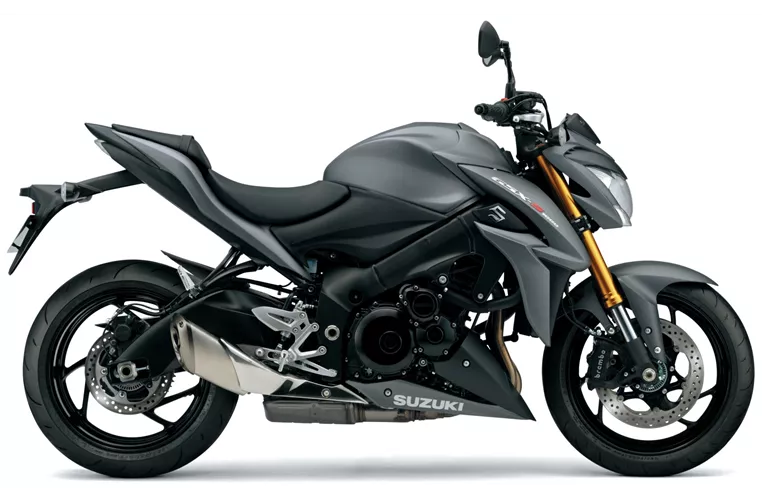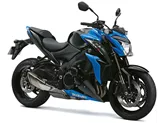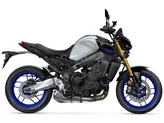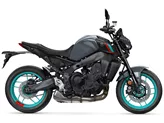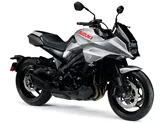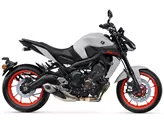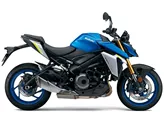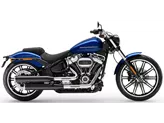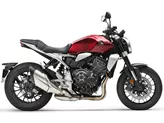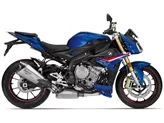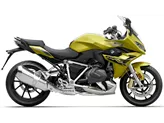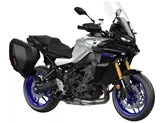Suzuki GSX-S1000 2016 vs. Yamaha MT-09 2018

Suzuki GSX-S1000 2016

Yamaha MT-09 2018
Overview - Suzuki GSX-S1000 2016 vs Yamaha MT-09 2018
The Suzuki GSX-S1000 model year 2016 and the Yamaha MT-09 model year 2018 are both naked bikes that offer powerful performance and comfortable riding positions. However, there are some notable differences between the two models.
In terms of engine power, the Suzuki GSX-S1000 has a more powerful engine with 149 HP compared to the Yamaha MT-09's 115 HP. This difference in power translates to a more exhilarating and thrilling riding experience on the Suzuki.
Both bikes have fuel injection systems and liquid cooling, ensuring efficient and reliable performance. They also have upside-down telescopic forks for the front suspension and swing arm with monoshock for the rear suspension, providing a smooth and controlled ride.
The chassis of both bikes is made of aluminum and features a twin tube frame design, which contributes to their stability and responsiveness on the road.

Suzuki GSX-S1000 2016
When it comes to braking, both bikes have double disk brakes at the front, but the Suzuki GSX-S1000 has larger 310 mm diameter disks compared to the Yamaha MT-09's 298 mm disks. This gives the Suzuki better braking control and stopping power.
In terms of advanced rider assistance systems, both bikes have ABS, which enhances safety by preventing wheel lock-up during braking. However, the Yamaha MT-09 also offers additional features like a quickshifter and traction control, providing more advanced riding aids.
In terms of dimensions and weights, the Suzuki GSX-S1000 has a slightly wider rear tire at 190 mm compared to the Yamaha MT-09's 180 mm tire. The Suzuki also has a longer wheelbase at 1460 mm compared to the Yamaha's 1440 mm. Both bikes have the same seat height of 815 mm.
When it comes to weight, the Yamaha MT-09 is slightly lighter with a kerb weight of 193 kg compared to the Suzuki GSX-S1000's 209 kg. This lighter weight contributes to the Yamaha's lively handling and agility.

Yamaha MT-09 2018
In terms of fuel tank capacity, the Suzuki GSX-S1000 has a larger 17-liter tank compared to the Yamaha MT-09's 14-liter tank, allowing for longer rides without the need for refueling.
In terms of strengths, the Suzuki GSX-S1000 is praised for its powerful engine, good braking control, stable chassis, comfortable seating position, and relatively low price. On the other hand, the Yamaha MT-09 is commended for its harmonious design, lively handling, comfortable seating position for tall riders, and incredibly powerful engine.
However, both bikes have their weaknesses. The Suzuki GSX-S1000 is criticized for its front end appearance, which some may find too aggressive. It also has a throttle response issue in the lower rev range, which can be problematic in certain riding conditions. The Yamaha MT-09, on the other hand, can be exhausting to ride when pushed to its limits and requires more riding skills compared to other bikes in its class. Additionally, some riders find the traction on the rear wheel to be less precise on the Yamaha.
In conclusion, both the Suzuki GSX-S1000 model year 2016 and the Yamaha MT-09 model year 2018 offer powerful performance and comfortable riding positions. The Suzuki has a more powerful engine and better braking control, while the Yamaha offers additional advanced rider assistance systems. Ultimately, the choice between the two will depend on the rider's preferences and priorities.
Technical Specifications Suzuki GSX-S1000 2016 compared to Yamaha MT-09 2018
Pros and Cons in comparison
Pros and Cons in comparison
Suzuki GSX-S1000 2016
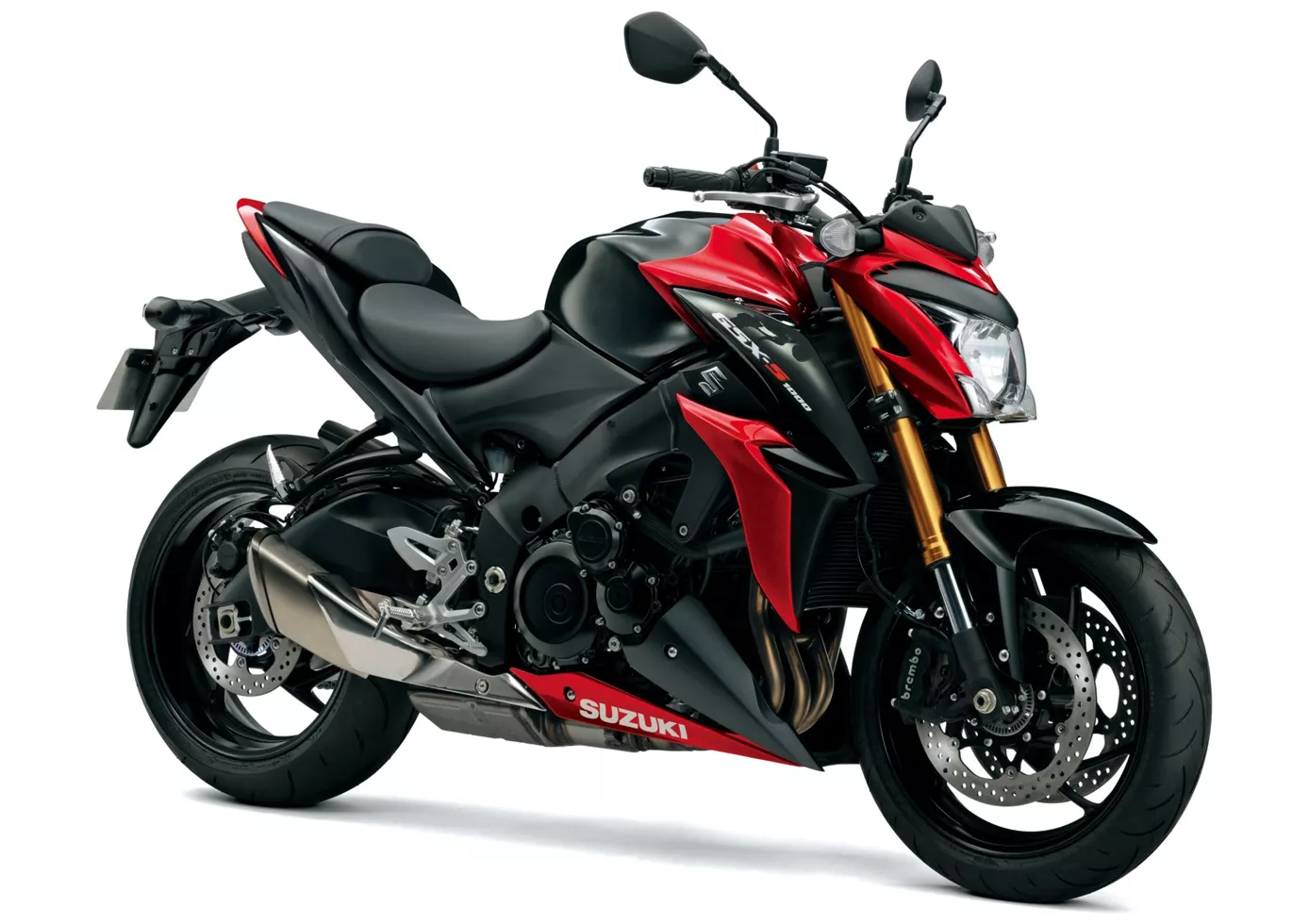
Some might be surprised that after waiting so long, Suzuki did not launch the ultimate, uncompromising power naked bike. Instead, the Suzuki GSX-S 1000 with its 149 hp seems almost too well-behaved. But once you ride it on the race track, you quickly realise that the engine is far more powerful in real life and that the rest of the performance of the chassis and braking system is also impressive. In return, it also offers a large portion of everyday and practical suitability - not bad ingredients when you have to cover everything from everyday to race track with a single bike.
Yamaha MT-09 2018

A coherent motorbike where everything fits together. The motorbike delivers what its looks promise. High-tech, charisma and lots of adrenaline. It is a mixture of supermoto, naked bike and streetfighter and it loves to be handled irrationally. A cool motorbike. Only in comparison with the MT-09 SP does one begin to miss a high-quality chassis.
Price Comparison Avarage Market Price Suzuki GSX-S1000 vs Yamaha MT-09
There are a few key differences between a Suzuki GSX-S1000 2016 and a Yamaha MT-09 2018. In terms of price, the actual average prices of both motorbikes are almost the same. Compared to Yamaha MT-09 2018 there are less Suzuki GSX-S1000 2016 bikes available on the 1000PS.de Marketplace, specifically 10 compared to 15. It takes less time to sell a Yamaha MT-09 with 72 days compared to 109 days for the Suzuki GSX-S1000. Since model year 2015 1000PS.de editors have written 36 reviews for the Suzuki GSX-S1000 and 57 reviews for the Yamaha MT-09 since model year 2013. The first review for the Suzuki GSX-S1000 was published on 27/09/2014 and now has more than 17,100 views. This compares to more than 39,900 views for the first review on Yamaha MT-09 published on 10/06/2013.
